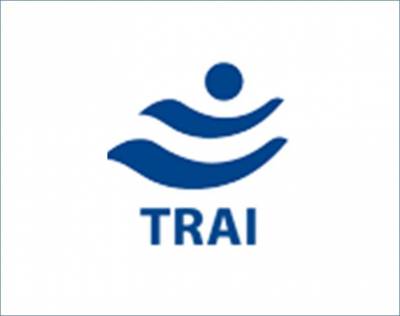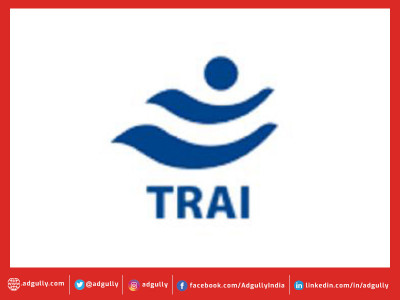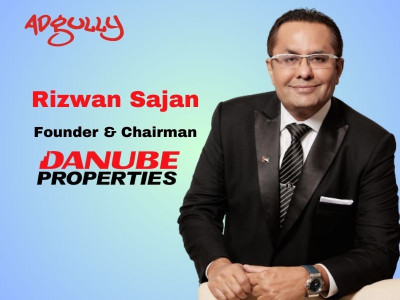Recommendations on cross-media ownership issued by TRAI
The Telecom Regulatory Authority of India (TRAI) has issued its recommendations on cross-media ownership. These recommendations cover thorough definitions for control, cross-media ownership, vertical integration and internal plurality.
As per the recommendation by the regulator, the News and current affairs genre is of utmost importance and should be considered as the relevant genre in the product market for formulating cross-media ownership rules. TV and print should be considered as the relevant segments in the product market. For print, only daily newspapers should be considered. Once private FM channels are allowed to air news generated on their own they too will be up for review under the cross-media ownership rules. The relevant geographic market should be defined in terms of language and the state(s) in which that language is spoken in majority. A combination of reach and volume of consumption metrics should be used for computing market shares for the TV segment. For the print segment, using only the reach metric is sufficient. For calculating market shares in the TV segment, the GRP of a channel should be compared with the sum of the GRP ratings of all the channels in the relevant market. The market share of an entity would be the sum of the market shares of all the channels controlled by it. In the relevant market for the print segment, the market share of newspaper would be the circulation of that newspaper with the combined circulation of all newspapers in the relevant market. The market share of an entity would be the sum of the circulation of all the newspapers controlled by it. The HHI (Herfindahl Hirschman Index) be adopted to measure concentration in a media segment in a relevant market.
Summary of Recommendations
Defining Ownership and Control
The Authority recommends that the following definition of control should be adopted for all issues concerning media ownership discussed in this paper: An entity (E1) is said to ‘Control’ another entity (E2) and the business decisions thereby taken, if E1, directly or indirectly through associate companies, subsidiaries and/or relatives:
(a) Owns at least twenty per cent of total share capital of E2. In case of indirect shareholding by E1 in E2, the extent of ownership would be calculated using the multiplicative rule. For example, an entity who owns, say, 30% equity in Company A, which in turn owns 20% equity in Company B, then the entity’s indirect holding in Company B is calculated as 30% * 20%, which is 6%.;
Or (b) exercises de jure control by means of: (i) having not less than fifty per cent of voting rights in E2; Or (ii) appointing more than fifty per cent of the members of the board of directors in E2; or (iii) controlling the management or affairs through decision-making in strategic affairs of E2 and appointment of key managerial personnel;
Or (c) exercises de facto control by means of being a party to agreements, contracts and/or understandings, overtly or covertly drafted, whether legally binding or not, that enable the entity to control the business decisions taken in E2, in ways as mentioned in (b) (i) (ii) and (iii) above. For this purpose: (i) The definitions of ‘associate company’, ‘subsidiary’ and ‘relative’ are as given in the Companies Act 2013. (ii) An ‘entity’ means individuals, group of individuals, companies, firms, trusts, societies and undertakings.
The Authority recommends that the following proviso be added to the definition of control as provided in the ‘Recommendations on Issues related to New DTH Licenses’ dated 23.07.2014: • “Provided that if E1 advances a loan to E2 that constitutes not less than – [51%] of the book value of the total assets of E2, E1 will be deemed to ‘control’ E2.”
Cross-Media Ownership
The Authority recommends that the News and Current Affairs genre is of utmost importance and direct relevance to the plurality and diversity of viewpoints and, hence, should be considered as the relevant genre in the product market for formulating cross-media ownership rules.
The Authority recommends that television and print should be considered as the relevant segments in the product market. For print, only daily newspapers, including business and financial newspapers, should be considered. Once private radio channels are allowed to air news generated on their own and become significant in the relevant market, a review of the cross- media ownership rules should be undertaken.
The Authority recommends that the relevant geographic market should be defined in terms of the language and the State(s) in which that language is spoken in majority. Thus the twelve relevant geographic markets would be as follows –
(i) Assamese and Assam (meaning, Assamese newspapers read and Assamese television channels watched in Assam, and similarly henceforth);
(ii) Bengali and West Bengal
(iii) English pan-India;
(iv) Gujarati and Gujarat;
(v) Hindi and Himachal Pradesh, Haryana, Delhi, Uttarakhand, Uttar Pradesh, Rajasthan, Madhya Pradesh, Chhattisgarh, Bihar, Jharkhand (these ten States together should be considered as a single market);
(vi) Kannada and Karnataka
(vii) Malayalam and Kerala;
(viii) Marathi and Maharashtra
(ix) Odia and Odisha;
(x) Punjabi and Punjab;
(xi) Tamil and Tamil Nadu
(xii) Telugu and Andhra Pradesh and Telangana;
In this list, the other languages included in the Eighth Schedule of the Constitution, namely – Bodo, Dogri, Kashmiri, Konkani, Maithili, Manipuri, Nepali, Sanskrit, Santhali, Sindhi and Urdu, to be considered based on the growth of newspaper circulation and television viewership in these languages in the future.
The Authority recommends that a combination of reach and volume of consumption metrics should be used for computing market shares for the television segment. For the print segment, using only the reach metric is sufficient.
The Authority also recommends that for calculating market shares, in the relevant market for the television segment, the GRP of a channel* should be compared with the sum of the GRP ratings of all the channels* in the relevant market and the market share of an entity# would be the sum of the market shares of all the channels* controlled by it i.e. : Market share of a channel = GRP of the channel*∑ GRP of all channels* in the relevant market Market share of an entity# =∑ Market share of all channels* controlled by it (*In the television segment, apart from pure news channels, some regional markets are characterized by the presence of news-cum-entertainment channels, which broadcast news bulletins for only some parts of the day in 30-minute slots, amidst various entertainment programs. The GRP of only the news content aired on these news-cum-entertainment channels is taken into account so that they are comparable, for the purpose of analysis, with the pure news channels.)
Similarly, in the relevant market for the print segment, the market share of a newspaper would be the circulation of that newspaper compared with the combined circulation of all newspapers in the relevant market, and the market share of an entity# would the sum of the circulation of all the newspapers controlled by it i.e.: Market share of a newspaper = Circulation of the newspaper ∑ Circulation of all newspapers in the relevant market Market share of an entity# = ∑ Market share of all newspapers controlled by it (# this entity may be a media entity itself, which is operating the television channel(s) and/or daily newspaper(s) in the relevant market or an entity which is controlling many media entities, which in turn are operating the television channel(s) and daily newspaper(s).)
The Authority recommends that the Herfindahl Hirschman Index (HHI) be adopted to measure concentration in a media segment in a relevant market.
The Authority recommends that a rule based on HHI be implemented i.e. if the television as well as newspaper markets are concentrated (HHI> 1800 in each), then, an entity contributing more than 1000 to the HHI of the television market, cannot contribute more than 1000 towards HHI in the newspaper market as well, and vice-versa. If it does so, it will have to dilute its control (as defined in paragraph 6.1 & 6.2 above) in one of the two segments. This rule applies only if the HHI thresholds are violated consecutively for two years.
The Authority recommends that the cross-media ownership rules be reviewed three years after the announcement of the rules by the licensor and once every three years thereafter. The existing entities in the media sector which are in breach of the rules, should be given a maximum period of one year to comply with the rules.
The Authority recommends that Mergers and Acquisitions (M&A) in the media sector will be permitted only to the extent that the rule based on HHI, as recommended in Para 6.10 above, is not breached.
The Authority recommends the following list of reporting requirements for this section. These reports are to be made on an annual basis to the licensor and the regulator. A. Transparency Disclosures (to be placed in public domain) (i) Shareholding pattern of the entity (ii) Foreign direct investment pattern of the entity (iii) Interests, direct and indirect, of the entity in other entities engaged in media sector (iv) Interests of entities, direct and indirect, having shareholding beyond 5% in the media entity under consideration, in other media entities/companies (v) Shareholders Agreements, Loan Agreements and any other contract/ agreement (vi) Details of key executives and Board of Directors of the entity. (vii) Details of loans made by and to the entity (viii) For all channels registered as news channels with MIB – Registered language(s) of operation, actual language(s) of operation, time slots for news programs B. Reports to be submitted to the Licensor and regulator (confidential) (ix) Subscription and advertisement revenue of the entity/ company (x) Advertising rates (xi) Top ten advertisers for each media outlet of the entity.
Changes in any of the parameters (i) to (vi) listed above must be reported to the licensor and regulator within thirty days of implementation of the change.
Vertical Integration amongst Media Entities
Based on an examination of the issues and analysis of the comments received in this exercise, the Authority reiterates its recommendations on vertical integration amongst broadcasters and DPOs as contained in its “Recommendations on Issues related to New DTH Licenses” dated July 23, 2014 and recommends early notification and implementation of the same. For ease of reference these are annexed at the end of these recommendations as Annex-3. Issues affecting Internal Plurality 6.15 Given that about six years have elapsed without any concrete action being taken by the Government, the Authority strongly recommends that its Recommendations of 12 November 2008 and 28 December 2012 may be implemented forthwith. These Recommendations inter alia specified: (a) the entities (political bodies, religious bodies, urban, local, panchayati raj, and other publicly funded bodies, and Central and State Government ministries, departments, companies, undertakings, joint ventures, and government-funded entities and affiliates) to be barred from entry into broadcasting and TV channel distribution sectors; (b) that in case permission to any such organisations have already been granted an appropriate exit route is to be provided; (c) that the arm’s length relationship between Prasar Bharati and the Government be further strengthened and that such measures should ensure functional independence and autonomy of Prasar Bharati ; and (d) that pending enactment of any new legislation on broadcasting, specified disqualifications for the entities in (a) above from entering into broadcasting and/or TV channel distribution activities should be implemented through executive decision by incorporating the disqualifications into Rules, Regulations and Guidelines as necessary.
The Authority further recommends that even surrogates of the entities listed in paragraph 6.15 above should be barred from entry into broadcasting and TV channel distribution sectors.
Given the inherent conflict of interest arising from practices such as “private treaties”, the Authority recommends that such practices be immediately proscribed through orders of the PCI or through statutory rules and regulations. This would cover all forms of treaties including (i) advertising in exchange for the equity of the company advertised; (ii) advertising in exchange for favourable coverage/ publicity; (iii) exclusive advertising rights in exchange for favourable coverage.
The Authority recommends that in “advertorials” (for that matter any content which is paid for), a clear disclaimer should be mandated, to be printed in bold letters, stating that the succeeding content has been paid for. The Authority is absolutely clear that placing such a disclaimer in fine print will not suffice. The Authority recommends that such action on advertorials and other material which is paid for81 may be taken immediately.
On “paid news”, in addition to the above, it is imperative that liability reposes in both parties to the transaction if it is tried to be passed off as news. For instance, if an MP/ MLA seeks favourable coverage in the media in exchange for payment, then if such coverage was given in the garb of “news”, responsibility would be that of both parties, not only of the politician.
Again, on grounds of the inherent conflict of interest, the Authority recommends that ownership restrictions on corporates entering the media should be seriously considered by the Government and the regulator. This may entail restricting the amount of equity holding/ loans by a corporate in a media company, viz., to comply with provisions relating to control.
The Authority recommends that editorial independence must be ensured through a regulatory framework as described in paragraph 5.73 (iii) above.
With respect to the “media regulator”, the Authority recommends that: (a) Government should not regulate the media; (b) There should be a single regulatory authority for TV and print mediums; (c) The regulatory body should consist of eminent persons from different walks of life, including the media. It should be manned predominantly by eminent non-media persons; This covers promotional write-ups for a company, write-ups from publicists on individuals and favourable write-ups on politicians in exchange for payment. Here, control would have the same meaning as enunciated in paragraphs 2.13 and 2.14 of these Recommendations. (d) The appointments to the regulatory body should be done through a just, fair, transparent and impartial process; (e) The “media regulator” shall inter alia entertain complaints on “paid news”; “private treaties”; issues related to editorial independence; etc, investigate the complaints and shall have the power to impose and enforce an appropriate regime of penalties.
The above recommendations, once implemented, will address the immediate objective of curbing unhealthy media practices. The Authority notes that there would still exist the need for a comprehensive evaluation of the legislative and legal framework in order to establish a robust institutional mechanism for the long term. The Authority, therefore, recommends that a Commission, perhaps headed by a retired Supreme Court Judge, be set up to comprehensively examine the various issues relating to the media, including the role and performance of various existing institutions, and the way forward. More than 5 years have elapsed since the Authority released its ‘Recommendations on Media Ownership’ on 25 February 2009. The situation has become graver. Clear time-lines may, therefore, be indicated to the Commission so appointed.

















Share
Facebook
YouTube
Tweet
Twitter
LinkedIn